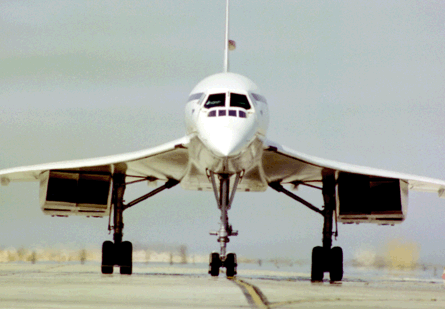As senior French officials involved in the Aerospatiale/BAe Concorde programme undergo a criminal trial in Paris after the July 2000 fatal Air France crash, their UK counterparts have defended the safety standards to which the supersonic transport was originally designed.
One of the five men charged with responsibility for the 25 July 2000 accident, in which 113 people died, is from France's DGAC aviation authority and is accused with failing in his responsibility for Concorde's safety oversight.
Two senior engineers from the French manufacturer are also in court, along with two Continental Airlines employees. A part from a Continental aircraft was blamed for Concorde's tyre damage, which caused the fuel tank to rupture and sparked catastrophic fire.
In conjunction with Concorde's development during the 1960s new certification requirements were drawn up for the Mach 2 airliner, dubbed the "Transport Supersonique" (TSS) Standards.
 |
|---|
© Airbus |
Speaking at a Royal Aeronautical Society historical lecture this week, Tony Heath, who was involved in monitoring Concorde's TSS Standards compliance while with the UK's Air Registration Board (predecessor to the Civil Aviation Authority) during the 1960s, said that he did not believe that any findings from the Paris crash suggested that the TSS Standards "had not been sufficiently far-seeing to prevent such an accident. We couldn't have foreseen the sort of mechanism that is believed to have caused a large hole in the wing skin."
John Chaplin, another former ARB official who began his involvement with Concorde as secretary to the UK's supersonic aeroplane airworthiness committee in 1958, says that the "basic objective was that Concorde should be no less safe than a subsonic aeroplane introduced at the same time".
He points out that a Concorde-era subsonic design also suffered a fatal accident due to penetration of the fuel tank by an external object: "Although the process was different, the end-effect was much the same."
Heath, who has attended the Paris trial, said that it appeared to him that the French court "was under the impression that Concorde was approved solely in France and therefore whoever was involved in the DGAC was culpable". He points out that Concorde's airworthiness was also certificated by the UK CAA and US Federal Aviation Administration.
According to Heath, one witness had outlined to the court the US National Transportation Safety Board's investigation in the 1979 Concorde accident at Washington Dulles when a fuel tank was ruptured on take-off after a tyre-burst.
"None of the NTSB's recommendations were aimed at armouring the wing - they were quite satisfied with the actions taken to prevent a tyre or wheel breaking up and debris puncturing the tanks," Heath says.
The trial began on 2 February and was originally due to last two months, but continues.
Related blog post -
LEARMOUNT: Nailing the Concorde criminals
Source: Flight International























